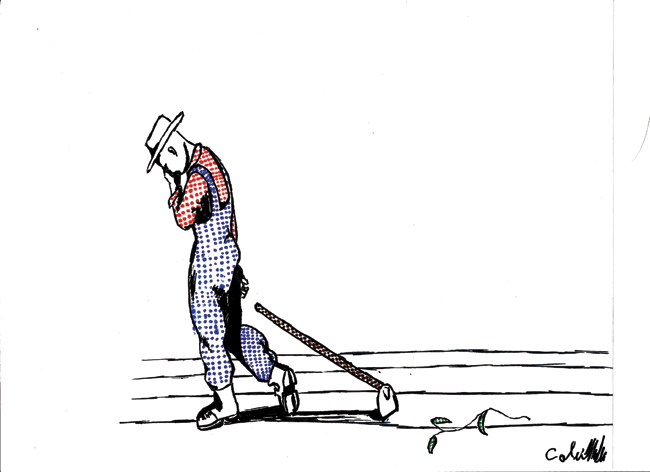A new study found that regions in Texas and California have experienced severe groundwater depletion over the last century due to unsustainable irrigation techniques.
Bridget Scanlon, hydrogeologist in the Bureau of Economic Geology at the Jackson School of Geosciences, published a study in May on water depletion levels in the High Plains regions across Texas, Kansas and Nebraska and the Central Valley region of California. These two regions combined produce a large portion of the nation’s food supply. According to the study, Scanlon compared data from NASA’s Gravity Recovery and Climate Experiment satellites as well as ground-based estimates from well water data in order to determine the level of depletion across these regions. Over the last century, a disproportionate concentration of depletion has occurred in Texas and California, Scanlon said.
“I started focusing my research on impacts of irrigation and water resources when I realized that irrigation consumes 90 percent of freshwater resources,” Scanlon said. “These two regions have accounted for 50 percent of groundwater depletion in the last century.”
Robert Reedy, a research engineering and scientist associate in the Bureau of Economic Geology and co-author of the study, said the results of the research should be interpreted within a bigger picture.
“The food supply is not in danger,” Reedy said. “Agriculture would not go away in the case of depleted water. Productivity would decrease, so it would shift the balances, and prices would certainly go up if a certain supply went down. Part of the whole thing is just to see where all of this is headed.”
Scanlon said one of the most significant findings was the concentration of water depletion in specific parts of the Texas and Kansas areas in the High Plains region, which showed that water depletion was not uniform across one area.
“Most people think the High Plains aquifer is all the same type of system and everything is the same across the aquifer, but with this study we have really shown that spatially it’s quite variable,” Scanlon said. “About 35 percent of the depletion is focused in 4 percent of the land area, so in order to better manage it, we need to understand that.”
In California’s Central Valley, a complicated piping system has allowed areas to the south with less rainfall to be replenished with surface water from northern areas that receive more rain, Scanlon said.
“In California it’s a little bit different,” Scanlon said. “There’s a lot of rain in the Sacramento region but in Bakersfield to the south, the rainfall rate is much lower. California developed a large pipe infrastructure to transfer surface water between regions.”
Despite the effectiveness of the pipe structure, which takes surface water from rainfall, a similar system in the High Plains region would not be viable, Scanlon said. In addition to the process being expensive, Scanlon said Texas does not have all the infrastructure California has and it would be a much more involved process to transfer surface water to areas in need.
Changbing Yang, a research associate in the Bureau of Economic Geology, said there will be significant repercussions if more efficient and sustainable systems aren’t put into place in the High Plains.
“Bridget Scanlon’s study over groundwater depletion in the High Plains and Central Valley regions is significant,” Yang said. “In the High Plains, groundwater yield will decrease by two times if we continue to irrigate it as we have been.”
Part of finding the bigger picture in terms of regional agriculture is realizing that many people are unaware that they may be affected, Reedy said.
“The way the food market is set up in the country, a lot of people are unaware of the whole chain of events and everything that goes into it,” Reedy said. “Different groups of people are aware of certain aspects of what’s going around them in the world and others just don’t hear or understand some aspects of everyday life. Farmers are living on the land and doing the work and sometimes even they don’t know what’s going on except maybe in their own region.”




















